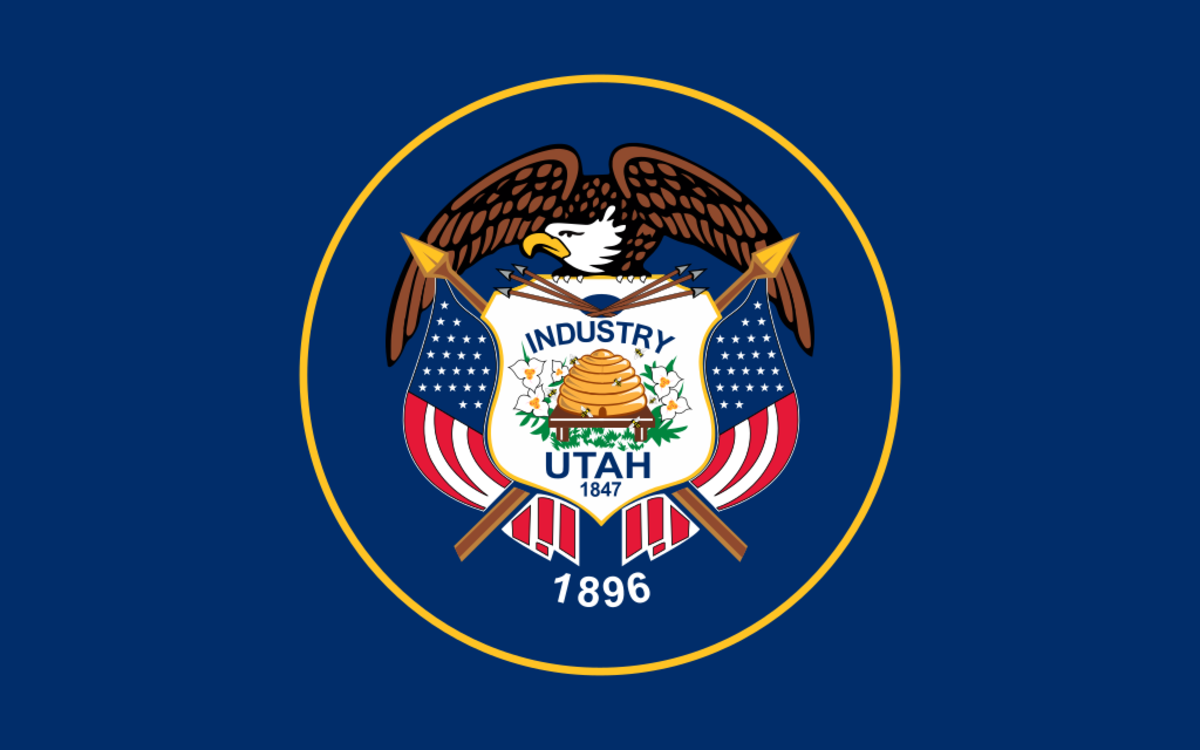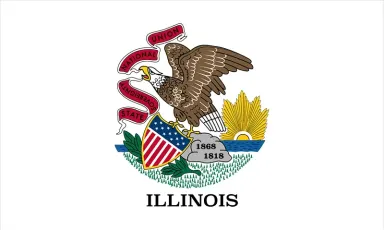Utah Trucking Laws

Utah is home to several major interstate highways, making it an important hub for truckers and travelers. Unfortunately, this also means the state experiences many mishaps involving large commercial trucks.
Utah’s interstate highways include four central and one auxiliary route, totaling nearly 1,000 of the state’s over 100,000 lane miles of roadway. These are:
I-15 from the Arizona state line at Littlefield to the Idaho state line at Malad City
I-70 from the Colorado state line near Grand Junction to Cove Fort
1-80 from the Nevada state line near Wendover to the Wyoming state line near Evanston
I-84 from the Idaho state line near Burley to Echo
I-15 is considered one of the most dangerous roads in Utah, according to a study conducted by The Advocates law firm. Interstate 15 runs through heavily populated regions in the state. I-15’s risk factors include a high-speed limit, limited visibility due to large vehicles, accident-prone highways, and heavy traffic.
In 2021, the Federal Motor Carrier Safety Administration (FMCSA) recorded 1,044 crashes involving large trucks and buses in Utah. Based on Utah’s Strategic Highway Safety Plan, an average of 29 people die due to commercial vehicle-related crashes. One of the state’s strategies is to promote Truck Smart campaign activities, which involve educating passenger vehicle drivers to drive safely around commercial motor vehicles (CMV). It also encourages truckers to buckle up, stay alert, and slow down.
The state has been enforcing laws, policies, and regulations to reduce traffic accidents further and protect drivers, passengers, and pedestrians from serious injuries, property damage, and fatalities. Understanding Utah's trucking accident laws can help you understand your rights if you are involved in such an incident.
Utah’s Commercial Driver’s License Law
A commercial driver’s license (CDL) applicant must have a commercial driver instruction permit (CDIP) by passing the written knowledge assessment and vision test. He should be at least 18 years old, a resident of Utah with a valid driver's license, and has at least one year of driving experience.
The CDIP only allows the use of a CMV while a licensed driver is present to supervise it. After practicing for 14 days with the CDIP, he can take the driving skills test to get the full CDL. This test is waived for military veterans who have CMV experience.
Another requirement is the medical certification from a licensed physician. The accreditation should indicate adequate general health to operate a CMV and be updated every two years.
CDL Revocation and Disqualification
CMV drivers should follow the rules and regulations to avoid CDL revocation and disqualification. For instance, truckers may lose their CDL for at least 60 days for committing two serious traffic violations within three years and at least 120 days for three or more serious traffic violations within three years. These violations include reckless driving, improper lane changes, excessive speeding, and driving without the proper class of CDL.
Truckers may also receive immediate and temporary out-of service-orders if they commit safety violations. If they drive during an out-of-service order, they risk revoking their CDL. The penalties are:
First violation - at least 90-day license revocation
Two violations in 10 years - at least one-year license revocation
Three or more violations in 10 years - at least three-year license revocation
Other situations that can result in license revocation are violating railroad-highway grade crossing rules, committing traffic violations while operating a personal vehicle, and leaving the scene of an accident.
Utah’s Hours of Service Law
Hours of service refers to the maximum time spent on duty, including driving time. It also specifies the frequency and length of rest intervals. This ensures truckers stay awake and attentive while operating a commercial motor vehicle.
The hours of service regulations for property-carrying drivers include an 11-hour driving limit after 10 consecutive hours off-duty. They may not drive beyond the 14th consecutive hour and should take a 30-minute break after driving for eight hours. The non-driving period may be off-duty, sleeper berth, or on-duty/not driving.
Additionally, truckers are not allowed to work 60/70 hours on duty in 7/8 consecutive days. They may restart the 7/8 successive days after being off duty for at least 34 hours. During adverse driving conditions, the 11-hour and 14-hour limits may be extended by two hours.
Utah’s Oversize and Overweight Restrictions for Trucks
Utah imposes limitations on the width, height, length, and load extensions. A single-unit vehicle may not exceed 45 feet, including rear and front bumpers. A semitrailer may not exceed a length of 53 feet, excluding safety appurtenances, hitches, airline connections, and refrigeration units.
Furthermore, there is no limit on the length of a double trailer combination and a truck tractor when the trailers combined measure 61 feet or less. For a combination of commercial cargo vehicles, the limit is 65 feet.
In addition, trucks may not carry loads extending more than three feet beyond the front or more than six feet beyond the rear of the vehicle. The maximum weight is 10,500 pounds on any individual wheel, 20,000 pounds on a single axle, and 34,000 pounds on a tandem axle. The gross vehicle weight should also not exceed 80,000 pounds.
Violation of the size and load restrictions is considered a Class C misdemeanor punishable by not less than a $200 fine for the first offense and a $500 fine for the second and subsequent offenses. However, trucking companies may request an oversize/overweight permit from the Utah Department of Transportation (UDOT) Ports of Entry. The department should approve the truck’s route before permit issuance. The driver should also ensure that the permit is readily available in the vehicle when requested by a personnel authorized by the department.
Utah’s Speeding Laws
Utah has two types of speeding laws – the basic and maximum speed limit laws.
Basic Speeding Law
Utah’s basic speeding law prohibits anyone from operating a vehicle at a speed greater than what is appropriate and reasonable given the circumstances, as well as current and future hazards, such as bad weather and poor road conditions. The law also requires truck drivers to reduce their speed appropriately when approaching intersections, railroad grade crossings, curves, hill crests, and narrow or winding roads.
Maximum Speed Limits
Utah’s maximum speed limits are as follows:
80 mph on rural freeways
75 mph for trucks on interstates and limited-access roads
70 mph on urban freeways
65 mph on divided and undivided roads
35 mph in residential areas
25 mph in urban districts
20 mph in reduced-speed school zones
Violating the state’s speeding law is considered an infraction punishable by up to $470 in fines. It will also result in 35 to 75 demerit points on the driving record. In 2022, Utah imposed a new law to address excessive speeding. Any person driving a vehicle at a speed of 105 mph or above will be charged with a reckless driving offense, a Class B misdemeanor. A speed violation of more than 100 mph will result in a 1505 enhanced fine.
Utah’s Commercial Trucking Insurance Requirements
Utah's no-fault law requires motor vehicle operators to pay a minimum of $3,000 in personal injury protection (PIP) coverage, which can be used to cover medical services, lost wages, and death expenses.
UDOT also outlines the motor carrier insurance requirements for commercial trucking companies engaged in intrastate, interstate, and foreign commerce. These are as follows:
$300,000 - for-hire trucks with under 10,001 gross vehicle weight rating (GVWR) carrying non hazardous properties
$750,000 - for-hire trucks with 10,001 or more GVWR carrying nonhazardous properties
$5 million - for-hire and private commercial vehicles with 10,001 or more GVWR carrying hazardous substances
$5 million - for-hire and private commercial vehicles under 10,001 GVWR carrying hazardous substances
$1 million - for-hire and private commercial vehicles carrying oil
In some cases, these limits are not sufficient to cover damages. Insurance companies offer other types of coverage. These are as follows:
How Much Can Someone Sue for a Truck Accident in Utah?
If the plaintiff’s PIP coverage is insufficient to cover economic damages, he can file a lawsuit to recover compensation against the negligent party. Economic damages include lost wages, future earning capacity, and medical expenses.
The compensatory award also covers non-economic damages, including pain and suffering, lost quality of life and consortium, emotional distress, and mental anguish. The state imposes a $450,000 limitation on non-economic damages for malpractice action against a healthcare provider.
Some lawyers use various methods to calculate non-economic damages: the multiplier and per diem methods. The multiplier method uses a number between 1.5 and 5 multiplied by the total economic damages, while the per diem method assigns a daily rate
It is also possible to receive punitive damages in some truck accident cases involving drunk driving, willful violations of trucking regulations, poor background checks, and destruction of evidence.
Utah’s Statute of Limitations for Truck Accidents
Utah law states that victims of truck accidents should file a lawsuit within four years of the date of the collision. The statute of limitations depends on the type of claim being filed.
For property damage, the deadline is three years from the date of the accident.
For a wrongful death claim, the deadline is two years from the date of the victim’s death.
If filing a case against a state employee, an elected public official, or a political subdivision, the lawsuit should be filed within two years.
If the victim is a minor, the clock begins when the minor turns 18.
If the victim suffers from cognitive disabilities due to the accident, the statute is also tolled.
Is Utah a No-fault State for Insurance Claims?
Utah is a no-fault state for truck insurance claims. This means that personal injury protection or PIP coverage pays for the medical and out-of-pocket expenses of individuals injured in an accident, regardless of who caused it. Note that PIP does not cover owners and operators of trailers and semi-trailers.
Under this system, obtaining compensation for pain and suffering and other non-monetary damages is impossible. To file a lawsuit against a negligent party, the plaintiffs should have taken on at least $3,000 in medical expenses or have suffered serious conditions, including permanent disability, impairment, or disfigurement.
Is Utah a Modified Comparative Fault State for Trucking Accident Lawsuits?
Utah adheres to a modified comparative fault system, under which plaintiffs may recover compensation even if they are partially responsible for the accident. However, their liability should be less than the fault of the defendant or group of defendants.
For example, if the court determines that you suffered $100,000 in damages but are 10% liable for the accident, you will receive a total compensation of $90,000. If the court finds out you are 50% at fault for the collision, you will not be compensated.
What Is the Average Settlement for Trucking Accident Lawsuits in Utah?
A study conducted by the Brown & Crouppen Law Firm states that the average truck accident settlement amount is $42,909.88. This is based on the settlements for trucking accident cases from 2015 to 2021. Moreover, the average settlement amount for tractor-trailer accidents is $47,777.50 and $35,412.80 for heavy/commercial truck collisions.
These figures should not be considered absolute because truck accidents vary from case to case. There are also several factors to be considered when calculating settlement amounts. These include:
Injury and damage severity
Income loss and pain and suffering
Party liability
Insurance policy limits
Evidence validity
Overall, Utah trucking accident laws are complex but easy to follow with the help of an expert. If you are involved in a trucking mishap, speak with an attorney knowledgeable about these regulations. The lawyer can review all relevant documents, research applicable laws, and advise you on how best to proceed.
Legal Resources for Utah Trucking Accident Victims
Utah State Bar
Utah State Bar governs the practice of law throughout the state. It promotes access to justice and educates the citizens on how the law works. It also provides legal services to the public, including modest means lawyer referral programs and pro bono help.
Utah Commercial Driver Handbook
The Utah Commercial Driver Handbook outlines the rules and regulations regarding operating commercial motor vehicles. These include information on how to drive, haul cargo, and transport passengers in a safe manner. It also provides the requirements for obtaining a commercial driver’s license.
Strategic Highway Safety Plan
Utah’s Strategic Highway Safety Plan website summarizes the state’s programs and initiatives to reduce severe injuries and deaths. It plays a vital role in improving the safety of the state's highways. The plan helps identify, prioritize, and address the most critical highway safety issues through engineering, enforcement, education, and emergency medical services.
Federal Motor Carrier Safety Administration
The FMCSA is a government agency regulating the operation of commercial motor vehicles. It aims to reduce collisions, injuries, and deaths involving large trucks and buses. Its website outlines federal government programs regarding new entrants, motor carrier safety assistance, and hazardous materials. It also establishes the national standards for obtaining a commercial driver’s license.
Expertise.com StaffAuthor
Step into the world of Expertise.com, your go-to hub for credible insights. We don't take accuracy lightly around here. Our squad of expert reviewers, each a maestro in their field, has given the green light to every single article you'll find. From rigorous fact-checking to meticulous evaluations of service providers, we've got it all covered. So feel free to dive in and explore. The information you'll uncover has been stamped with the seal of approval by our top-notch experts.




